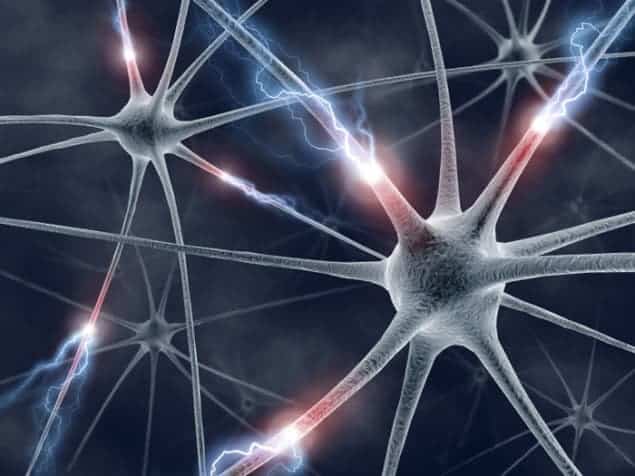
Have you ever wondered why certain sets of musical notes sound perfectly melodious while others make you want to cover your ears? Now, physicists in Europe have developed a model that suggests that certain notes sound harmonious because of the consistent rhythmic firing of neurons in the auditory system. The researchers say that they have now quantified this effect by showing that the neural signals are regularly spaced for frequencies that are pleasant sounding, but are erratic for those that are not. They say that their model may also provide insights into other senses, such as vision, that employ similar neural processing systems.
Hitting the right notes
How humans and animals perceive sound has long fascinated scientists because of the brain’s amazing ability to process auditory signals. “The auditory sensory system is the most investigated apparatus. But even simple sound signals – pairs of pure tones such as musical chords – are able to cause phenomena that can not be simply explained,” says Bernardo Spagnolo of the University of Palermo, Italy, and one of the authors of the study published in Physical Review Letters this month.
As examples, Spagnolo cites two things that musicians take for granted: the “pitch perception” and the “perception of consonance and dissonance”. Simply put, perceiving pitch is simply being able to differentiate clear frequencies of sounds, while the perception of consonance and dissonance is being able to tell the difference between harmonious and inharmonious chords.
In their current research, the researchers focused on consonance and dissonance perception with the aim of identifying the location and quantity of the signals associated with harmony and disharmony in the brain.
On board the “spike trains”
Hearing involves the conversion of sounds into neural “spike trains”. The researchers’ model comprises three neural-like elements. Two of these elements represent sensory neurons and are driven by noise at two different frequencies. The outputs of two neurons, in the presence of a “noisy” environment, are synaptically connected with the third neuron, which represents an “interneuron”. This is an internal neuron that connects a sensory neuron to other neurons in the brain. In reality there are more than two initial neurons, as the human ear can operate at frequencies of between 20 Hz and 20 kHz and can detect sounds over a range of 120 decibels.
The output spike train of the interneuron is the main focus of the study, which found that if an acoustic signal is transformed by the auditory system into spike trains with a regular distribution of inter-spike intervals, then the signal is perceived as harmonious. But when the inter-spike intervals are irregular, the signal is perceived as inharmonious. At the output of the interneuron, inharmonious input signals give rise to blurry spike trains, while the harmonious signals produce more regular, less “noisy” spike trains.
Senses and sensibility
The research team quantified the regularity of the interneuron output in terms of the entropy of the signal. “This regularity is linearly connected with informational entropy: harmonious chords give rise to high spike-train regularity and so low entropy; inharmonious chords give rise to low spike-train regularity and so high entropy.”
Spagnolo points out that the model can investigate the role of external and internal “environmental noise” in the nervous system, with respect to the sensory phenomena of “recognition” and “permanence of information” contained in complex input signals in the brain. “Investigating this process can help to understand which types of input signals are able to survive in the noisy environment of the brain, reveal the mechanism of this process, and explain what it means from a perceptional and cognitive point of view,” claims Spagnolo. He also says that studying and understanding the auditory system provides a basis for other less-studied sensory systems “that exhibit the analogous principles of conversion of environment stimuli into the neural spike trains”.



